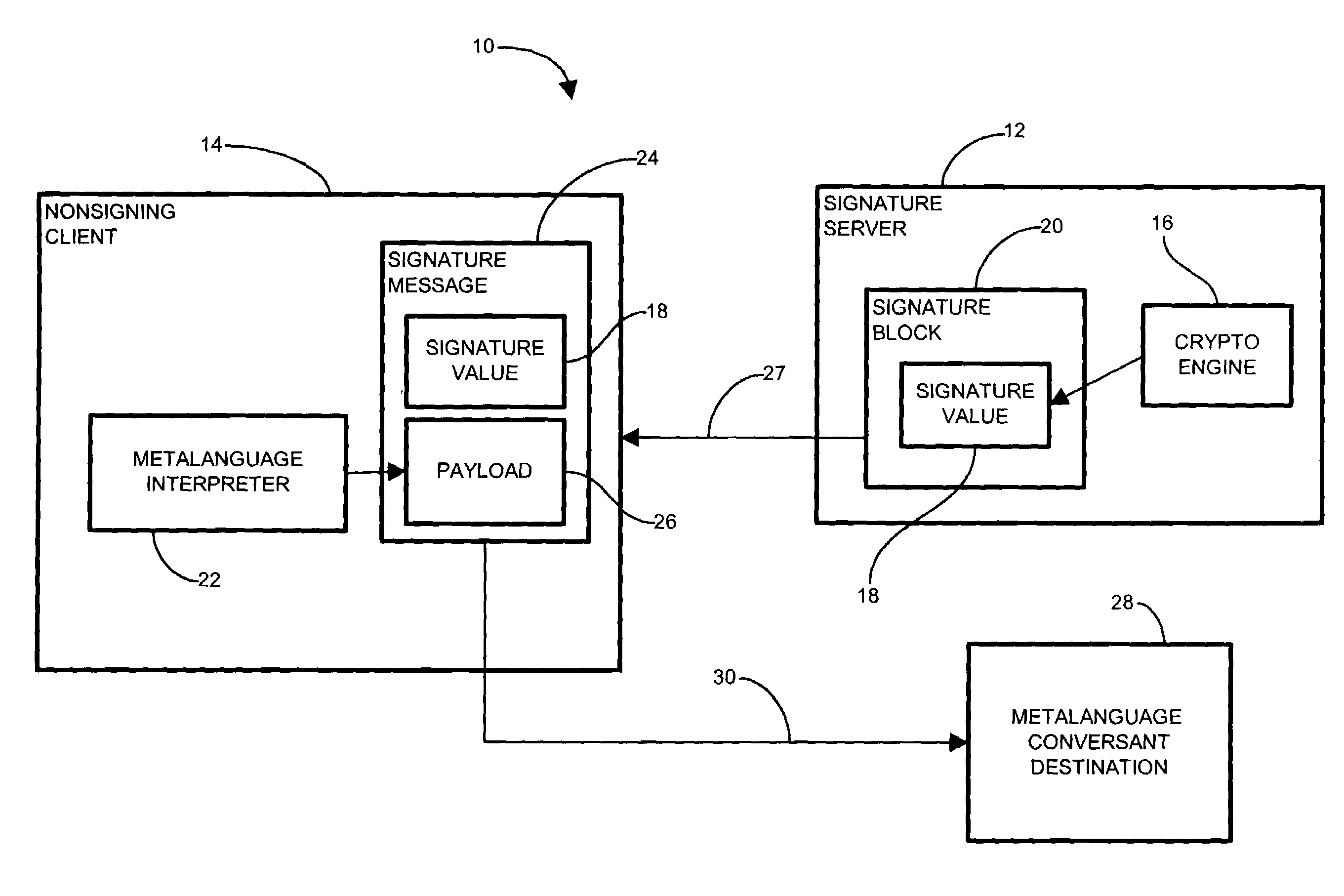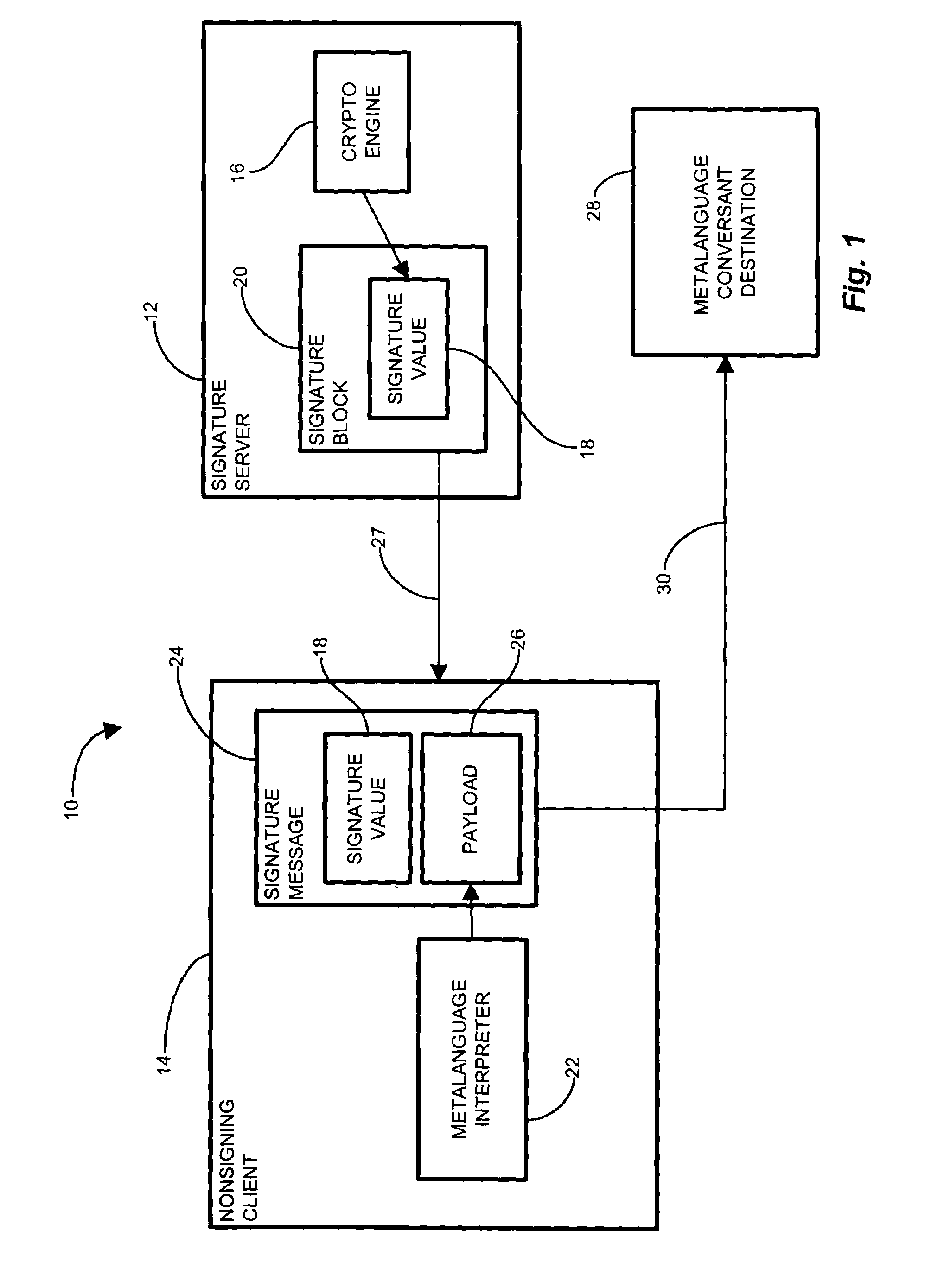System and methods for using a signature protocol by a nonsigning client
a signature protocol and client technology, applied in the field of system and methods for using a signature protocol by a non-signing client, can solve the problems of inefficient, undesirable, or expensive to equip a node to handle most all different protocols, languages and formats, inefficient to install a spreadsheet application, or a second word processing application, on a pc, and inefficient to omit an application, such as a slide viewer
- Summary
- Abstract
- Description
- Claims
- Application Information
AI Technical Summary
Benefits of technology
Problems solved by technology
Method used
Image
Examples
Embodiment Construction
[0031]Embodiments of the invention significantly overcome many of the shortcomings present with the aforementioned conventional signature-based communication mechanisms. In a particular configuration, the nonsigning client is unencumbered from signature generating components (nonsigning client), and conversant in the signature-based metalanguage such as XML. The client elects to send a payload of data to a recipient destination (destination) also conversant in the metalanguage, according to the metalanguage format. The nonsigning client receives a signature block including a signature value from a server, and therefore stores a signed XML message although without the processing capability (components) for authenticating or regenerating the signature. The nonsigning client then generates and / or identifies a payload for transmission according to the metalanguage format.
[0032]The nonsigning client (user) without the XML signature capability configured, therefore, nonetheless maintains ...
PUM
 Login to View More
Login to View More Abstract
Description
Claims
Application Information
 Login to View More
Login to View More - R&D
- Intellectual Property
- Life Sciences
- Materials
- Tech Scout
- Unparalleled Data Quality
- Higher Quality Content
- 60% Fewer Hallucinations
Browse by: Latest US Patents, China's latest patents, Technical Efficacy Thesaurus, Application Domain, Technology Topic, Popular Technical Reports.
© 2025 PatSnap. All rights reserved.Legal|Privacy policy|Modern Slavery Act Transparency Statement|Sitemap|About US| Contact US: help@patsnap.com



